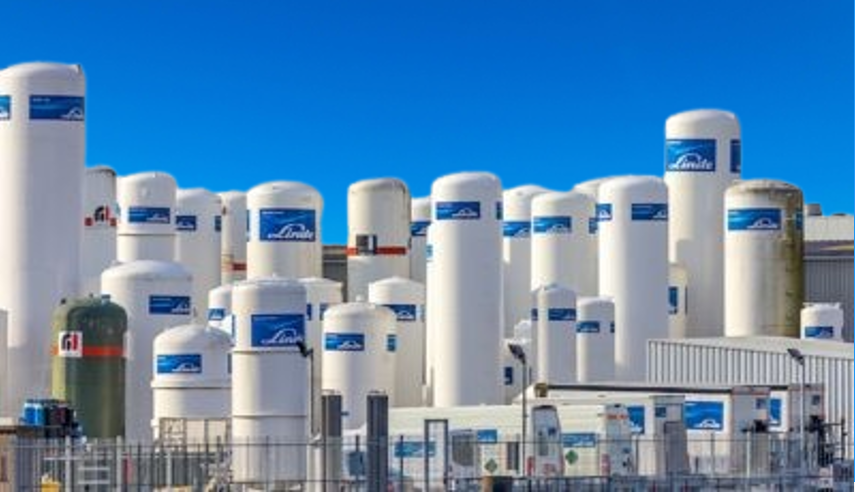|
Getting your Trinity Audio player ready...
|
As green hydrogen transitions from lab concept to industrial reality, the world’s major powers are racing to secure their stake in what could define the future of energy, climate policy, and geopolitical influence.
Once a niche concept, green hydrogen—produced using renewable electricity and electrolysis—has become a central pillar in global decarbonization strategies. The International Renewable Energy Agency (IRENA) forecasts more than $240 billion in investments by 2030, with demand potentially reaching 100 million tons annually. But beyond climate goals, this race is about technological leadership, industrial policy, and global energy hegemony.
Subsidies, Sovereignty, and Strategy
The United States, through the Inflation Reduction Act, offers up to $3 per kilogram of green hydrogen, fueling over $40 billion in announced investments. Germany tops that with subsidies reaching $5.5 per kilo via the H2Global initiative, aiming to stimulate both domestic production and global supply agreements. Meanwhile, China dominates in manufacturing, controlling 40% of global electrolyzer capacity, with over 200 projects and $33 billion committed through 2030.
In the Gulf, Saudi Arabia’s NEOM project—set to produce 600 tons/day by 2026 with an $8.4 billion investment—highlights the region’s ambition to remain a key player in energy, albeit with a greener profile.
Europe: From Gas to Green
Europe sees green hydrogen as essential for decarbonizing hard-to-abate sectors such as steel, cement, shipping, and aviation. The EU aims to produce 10 million tons domestically and import another 10 million by 2030. Massive subsidies—€10 billion in Spain, €9 billion in France, and H2Global in Germany—support these goals. Industrial-scale projects like NortH2 in the Netherlands and Puertollano in Spain are already in development.
Yet, Europe’s strategy brings new dependencies, particularly on regions like North Africa and Latin America, raising concerns of “green colonialism” and external reliance.
Asia’s Industrial Edge
China leads the world in hydrogen production (albeit mostly gray) and is rapidly transitioning to green alternatives. Projects like Sinopec’s $2.9 billion Ulanqab complex and the Ordos cluster in Inner Mongolia reflect this pivot. Cheap equipment and a tightly integrated value chain give China a significant advantage.
Elsewhere in Asia, Japan and South Korea are advancing hydrogen use in transport and energy exports, viewing green hydrogen as both an environmental solution and an economic opportunity.
Emerging Players: The Middle East, Africa, and Latin America
In the Middle East, oil economies are investing heavily to ensure a place in the renewable future. The UAE and Saudi Arabia are developing large-scale export projects. In Africa, nations like Namibia and Morocco are attracting billions in hydrogen projects, often backed by European partners. But limited local industrialization risks replicating past patterns of resource extraction without development.
Latin America, particularly Chile and Brazil, is also moving fast. Chile has 70+ projects underway, with $100 billion in expected investments. Brazil’s ports of Pecém and Suape could attract $200 billion by 2040. However, like Africa, the region faces the risk of becoming a raw material exporter without building domestic value chains.
Barriers and Risks
Despite growing momentum, the green hydrogen boom faces significant challenges:
- Inequitable financing: Northern countries offer robust subsidies, while developing economies often lack the means to compete.
- Greenwashing: Without strict certification, “green” hydrogen could be produced using fossil-based electricity.
- Infrastructure deficits: Meeting 2030 targets requires 300,000 km of pipelines and specialized port facilities—investments exceeding $500 billion.
- Geopolitical tension: Control over electrolyzer production, fuel cell technologies, and value chains could recreate old energy dependencies under a new name.
Global Projects Defining the Future
Key industrial-scale projects illustrate where the real momentum lies:
- NEOM (Saudi Arabia): $8.4B, 600 tons/day by 2026
- NortH2 (Netherlands): 10 GW by 2040; 1 GW phase in 2027
- U.S. Hydrogen Hubs: 7 regional hubs, $40B+ in investment
- Sinopec Ulanqab (China): $2.9B, 100,000 tons/year
- Hyphen (Namibia): $10B, 300,000 tons/year by 2027
- Brazil (Ports of Pecém & Suape): $200B projected by 2040
These are not pilot projects—they are continent-scale investments that will shape the next decade of energy development.
Conclusion: Promise or Mirage?
Green hydrogen stands at the crossroads of climate ambition and geopolitical strategy. Whether it becomes a tool for global decarbonization or replicates the inequities of fossil fuel markets will depend on how value chains are built, who benefits from the investments, and whether the transition is truly inclusive.
It may be the lever to transition to a more balanced, sustainable and adaptable process in freeing the planet from total dependence on fossil fuels and to a gravitation towards a cleaner energy source, or yet another mirage in the desert of unmet promises. The decade from 2025 to 2035 will decide which vision prevails.
References
- International Renewable Energy Agency (IRENA). Global Hydrogen Trade to Meet the 1.5°C Climate Goal. 2022. https://www.irena.org
- International Energy Agency (IEA). Global Hydrogen Review 2023. October 2023. https://www.iea.org/reports/global-hydrogen-review-2023
- U.S. Department of Energy. Regional Clean Hydrogen Hubs. 2023. https://www.energy.gov
- European Commission. A Hydrogen Strategy for a Climate-Neutral Europe. July 2020. https://ec.europa.eu
- Center for Strategic and International Studies (CSIS). China’s Hydrogen Industrial Strategy. January 2023. https://www.csis.org
- Reuters. EU aims to produce and import 20 million tonnes of renewable hydrogen by 2030. February 2023. https://www.reuters.com
- Argus Media. China’s Sinopec builds Xinjiang hydrogen plant. March 2023. https://www.argusmedia.com
- BloombergNEF. Hydrogen Market Outlook. 2024. https://about.bnef.com



